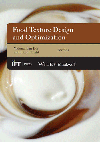Cultured products as food ingredients

Food research and development professionals are always seeking ingredients to incorporate into new products that will meet the latest consumer food trends. Today’s consumers want “value” – which translates to mean convenient, healthy, sustainable and tasty. Additionally, consumers want foods that have ingredient labels with a short list of words that are familiar and easily understood.
Unless you live in a cave, you know that yogurt and other fermented milk products are generally viewed very favorably using today’s consumer value criteria:
- They contain milk’s inherent nutrient goodness;
- They are associated with specific health benefits like lean body mass, satiety, digestive health and immune function;
- They come in many ready-to-eat forms;
- They satisfy consumer tastes.
Dairy product manufacturers know from their own experiences that consumers like their products as a meal, snack or incorporated into their favorite food or beverage at home. In recent years, the unprecedented consumer demand for Greek-style cultured dairy products (yogurts, cream cheese, dairy spreads, etc.) is a prime example that fermented milk products can deliver what consumers want in their food.
See the sales beyond the dairy case
Food R&D scientists, who are feeling the pressure from their marketing counterparts to develop new products, are open to hearing what cultured milk product manufacturers have to offer to help them develop and launch the next new food item. They want to capitalize now on the popularity of cultured milk products. So it’s time to take your cultured dairy products knowledge beyond the dairy case. Food formulators/developers want to know what product development challenges and opportunities can be best answered by incorporating cultured milk products as food ingredients.
Dairy manufacturers must communicate the attributes of cultured dairy products as a food ingredient and provide timely and trusted service to food manufacturers. It is about taste, nutrition, performance, availability, costs and ease of use for the food manufacturer. Cultured milk product manufacturers need to demonstrate that their products deliver great dairy flavors that complement many foods.
Become a developer’s best friend
Show food formulators how your cultured products can build viscosity, form gels, help emulsify other food components, remain soluble under a wide range of conditions, improve the appearance of the product and be consumer-friendly on the label. Food formulators want to know that such products are safe, nutritious and are produced using sustainable practices. They want to know that you will deliver your cultured dairy product how they want it (with the right product attributes and in the right packaging), at any time and at any place. They need to know that the cultured dairy ingredient supplier will be timely in its technical service to help address any questions that can come up during bench-top formulation through to full-scale production. Provide reliable and valued expertise to build the kind of trust anyone wants from their ingredient suppliers.
To really jump start the dialogue with a food product developer, bring ideas, prototypes and formulas to open the dialogue and get the creative juices going to engage these busy individuals. Reducing the time it takes them to develop a good-tasting, successful new food product is the goal.
In the home, consumers use cultured dairy products as functional, tasty and nutritious ingredients in baked goods, main dishes, desserts, snack, sauces, dressings, dips, spreads, beverages, appetizers and much more. Telling food formulators that you know how your cultured dairy product (as an ingredient) will work in their food system and how your cultured dairy product ingredient will add consumer value will be music to their ears. Your reward will be empowering food formulators to product development success using cultured dairy ingredients.
As much as I like a cup of yogurt and other cultured milk products for all their many benefits, I also like variety in the foods I eat. Supplying cultured dairy products as food ingredients rather than as a final consumer product is a different business model, but it can open up opportunities to showcase the great value of yogurt, cottage cheese and other fermented milk products in new forms, new marketing channels and new eating occasions that may not always be available for traditional dairy product marketers.
Put the necessary people and programs in place now to take advantage of the growing interest in formulating new food products with cultured dairy products to create a wider variety of tasty foods for today’s consumers.
Looking for a reprint of this article?
From high-res PDFs to custom plaques, order your copy today!








